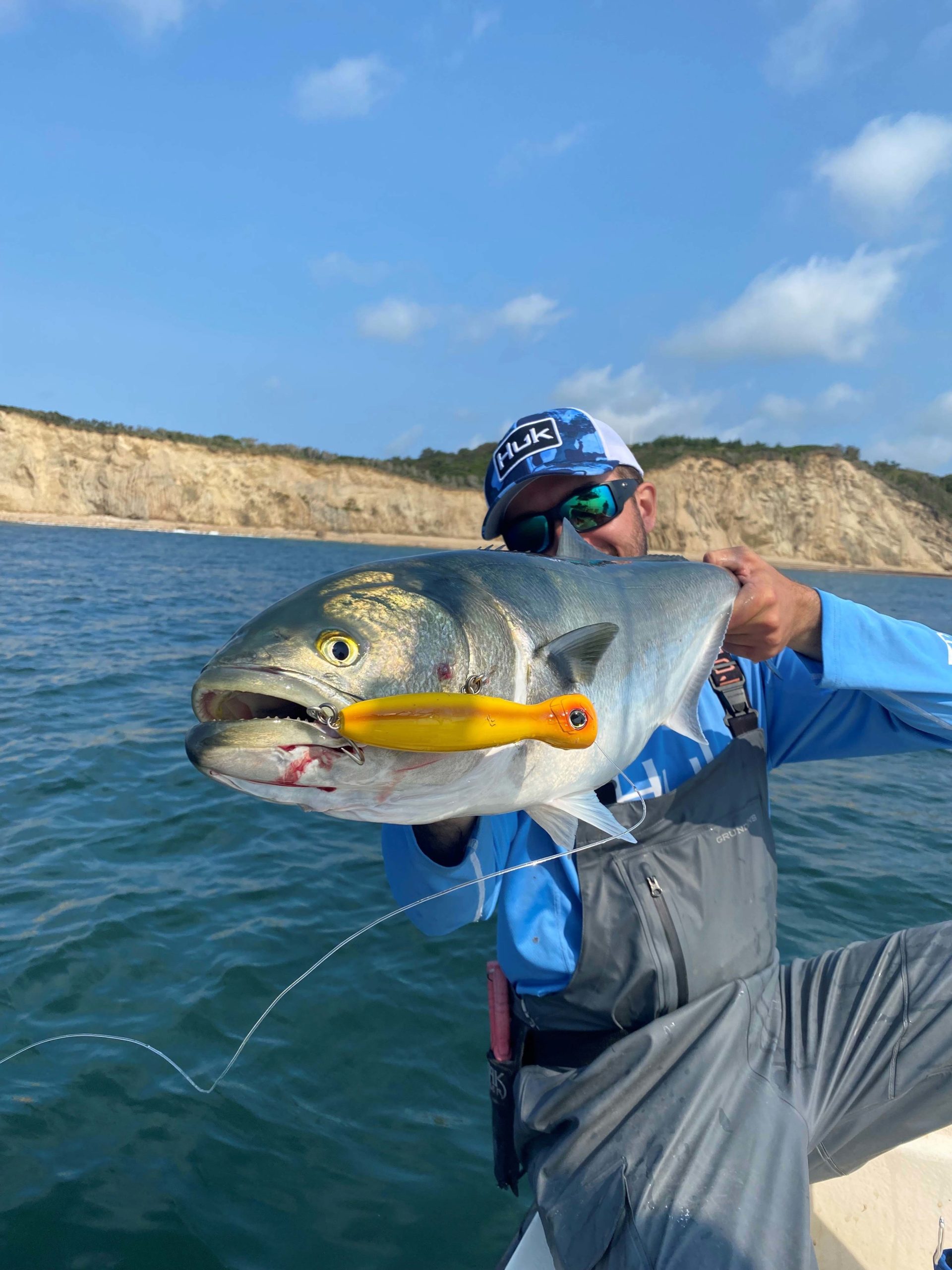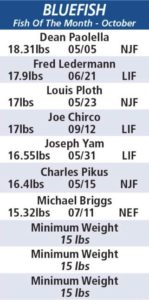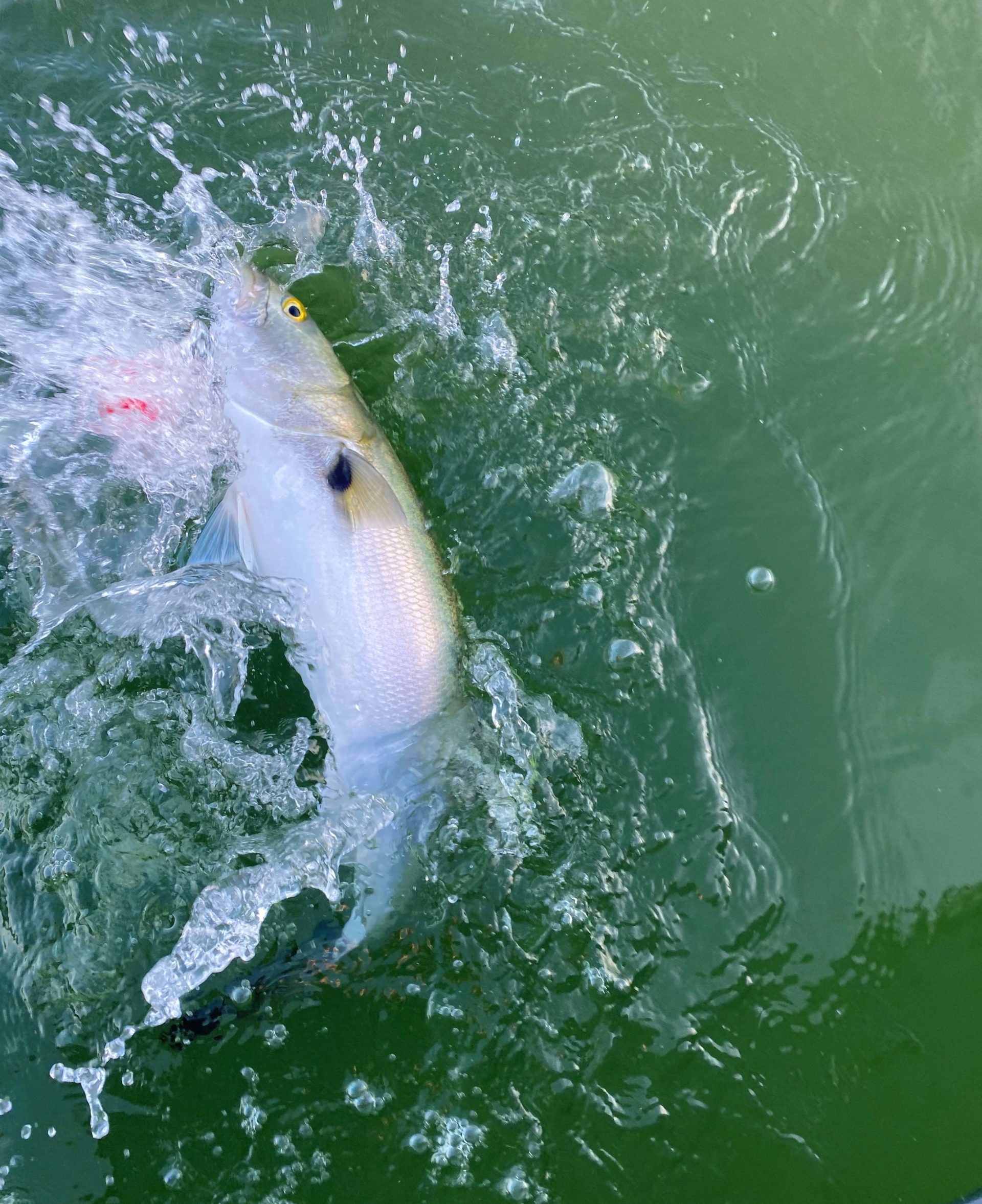If you want gator blues, head for Block!
It’s well known that bluefish are an aggressive, hard-fighting gamefish in the Northeast. Yes, there are rare times when they can be picky, but for the most part, if you find them, they will usually cooperate. The problem, in recent years, has been the “finding” part of the equation. Most of my time fishing is done with bluefish at the back of my mind because I want to fish areas where they are not. I fish light tackle, 10-pound test outfits with light fluorocarbon leaders and bucktails for the most part—this gear does not hold up well against the destructive teeth of a blue and will usually result in a lost lure. But, there are times when their willingness to hit and their aggressive battles are a welcome change of pace to whatever fishing you may be doing.
The relative lack of bluefish is not just a Long Island thing either, some of the famous bluefish spots in New England have dwindled to shadows of what they once were. I know a few spots that still host bluefish bites, albeit on increasingly infrequent occasions, but one spot that seems to hold them consistently, and I mean big gator blues, is Block Island.
Nearshore Beasts

Block Island is a great place to target big bluefish because there are different areas to catch them using many different techniques. I will start with my favorite—the shoreline. Casting topwater lures on a high sun, bluebird day, will usually not result in a striper but the bluefish seem to love it. The key to this type of fishing is finding moving water near the shore. I concentrate most of my fishing to the southern end of the island. The presence of any kind of bait will make this area a no-brainer also. Look for terns that seem interested in what’s under the water and fish in that area.
Big lures rule in nearshore scenarios. Yo-Zuri Surface Cruisers or Mag Poppers, Musky Mania Docs, big Super Strike floating poppers or any one of the larger poppers on the market will trigger explosive responses. Even if there are tiny baitfish prevalent, use the big lures. There are many rocks and mussel beds in this area that host small porgies, sea bass, bergals and other fish that are feeding on those same tiny baitfish; therefore, the blues are not so keyed in on just the small size. Keep in mind that a heavier rod will be needed to cast and work these bigger and heavier lures. Think along the lines of a 7- to 8-foot rod capable of throwing up to 3 ounces. This area is also well suited for the fly rod angler. After a drift or two, you will see where the fish are concentrated and that will allow you to make accurate casts with the fly rod using streamers or poppers. A teen-sized blue is a formidable opponent on the fly.
This fishing does have some risks around the actual island. There are a lot of huge rocks—some pretty far from shore—so keep your eyes open. The modern charts of today have most, but not all of these marked. The more you fish these areas, the more you will learn where they are. The next thing to watch for are breaking waves. No law states a 2-foot sea will stay a 2-foot sea. Anyone who’s been at the beach for any amount of time knows that now and then, a much larger wave will come in. These waves are pretty much harmless on the beach but this wave could roll your boat if you are in the wrong spot so use caution in this specific location.
Ledge Monsters
| DREAM BOAT PLANNING |
If you’ve already started to map out your plan for the 2022 Dream Boat Contest, look to the Block Island area for a top-placing bluefish catch. Blues in this area have a buffet of baits to choose from, making them a prime candidate for the number one spot on the leaderboard. Take a look at the 2021 bluefish leaderboard below where Dean Paolella took first place with an 18.31-pounder but also notice three slots were left unfilled by the end of the contest and points were left on the table. |
Southwest Ledge is another excellent spot at times for gator blues. There are times when they will be in the shallower, 30- to 40-foot depths, on top of the ledge but most of the time I find them in the deeper water to the north, west and south. This area experiences an influx of vast schools of sand eels over the course of most seasons. You will easily find the blues when you’re out there during one of these periods. They will regularly come to the surface in 60- to 80-feet of water. The explosions from these gator blues mimic tuna feeding so closely that I’ve seen spreader bars and daisy chains go out on more than one occasion, a case of mistaken identity.
Poppers, tins and jigs all work on the ledge. When there are few sand eels, the blues may still feed on transient pods of bunker, porgies or sea bass. We’ve had plenty of these come up bitten in half over the years. You can get away with lighter tackle here but remember you will have a fight on your hands since some of these monsters can exceed 20 pounds if they’ve been feeding heavily. As I mentioned earlier, I’m a fan of 10-pound test braid. Set your drag correctly and you’ll have no problem tiring out one of these fish if fought on the aggressive side. This is another spot where gator blues can easily be caught when the time is right. When they push the bait up top, sand eel imitating flies and poppers will catch plenty of these tackle busters.
Hit The ‘Mills

The Windmills are another consistent spot for blues. They hold many other species of fish too. Porgies, blackfish and sea bass all traverse up the structure from 80 feet down to within 20- to 30-feet of the surface. This provides the blues a buffet to feed upon. You can fish these structures as long as you don’t tie up. They are very impressive to see in person and the fishing here is outstanding. All one has to do is drift by and cast near the towers. Let your lure sink down and then retrieve. How far down varies day by day. There are times when they’re on the bottom and times they’re 10 feet down from the surface. Striped bass are a common catch here, too.
Try using a tin or jig in this area, count as the lure drops, and then begin your retrieve. Let it drop and start your retrieve at different depths until you discover which one the blues are feeding. Once you do, you will know the perfect drop count that will put you in the strike zone every cast.
Fishing for blues here does not match well with my preferred lighter tackle. Heavier tackle is needed to get them out of the mussel-encrusted structure that the fish are in or near. Think about using a 7-foot rod with 30-pound braid in this location.
Some anglers scoff at the thought of catching blues which definitely isn’t a good mindset to have. Pound for pound, a bluefish will out-pull and out-battle any striped bass of the same size. Their strikes are explosive, they peel drag like mad and they don’t stop fighting the entire time—need I say more?




